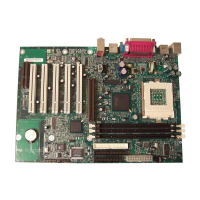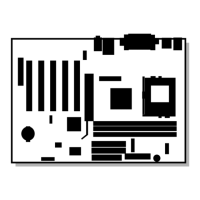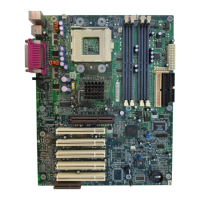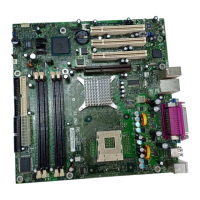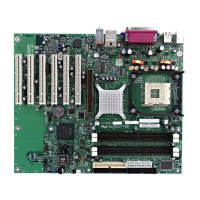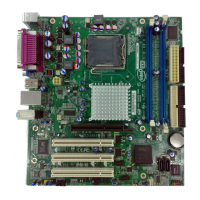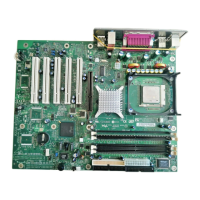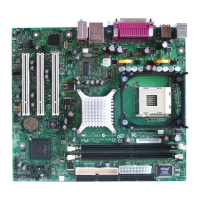Intel
®
Desktop Board D815EEA Technical Product Specification
20
1.5 System Memory
The D815EEA board has three DIMM sockets and supports the following memory features:
• 3.3 V (only) 168-pin SDRAM DIMMs with gold-plated contacts
• Unbuffered single- or double-sided DIMMs
• Maximum system memory: 512 MB; minimum system memory: 32 MB
• 133 MHz SDRAM or 100 MHz SDRAM
• Serial Presence Detect (SPD) and non-SPD memory
• Non-ECC and ECC DIMMs (ECC DIMMs will operate in non-ECC mode only)
• Suspend to RAM
Table 5 lists the supported DIMM configurations. In the second column of Table 5:
• “DS” refers to double-sided memory modules (containing two rows of SDRAM)
• “SS” refers to single-sided memory modules (containing one row of SDRAM).
When installing memory, note the following:
• Non-SPD DIMMs will always revert to a 100 MHz with 3-3-3 timing SDRAM bus.
• Mixing Non-SPD DIMMs with SPD DIMMs will always revert to a 100 MHz with 3-3-3
timing SDRAM bus.
• The BIOS will not initialize installed memory above 512 MB. At boot, the BIOS displays a
message indicating that any installed memory above 512 MB has not been initialized.
• Mixed memory speed configurations (133 and 100 MHz) will default to 100 MHz.
• 133 MHz SDRAM operation requires a 133 MHz system bus frequency processor.
• The board should be populated with no more than four rows of 133 MHz SDRAM (two
double-sided or one double-sided plus two single-sided DIMMs)
• 100 MHz SDRAM may be populated with six rows of SDRAM (three double-sided DIMMs).
✏ NOTE
If more than four rows of 133 MHz SDRAM are populated, the BIOS will initialize installed
memory up to 512 MB at 100 MHz.
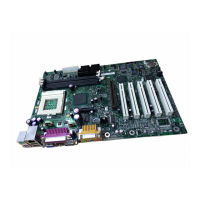
